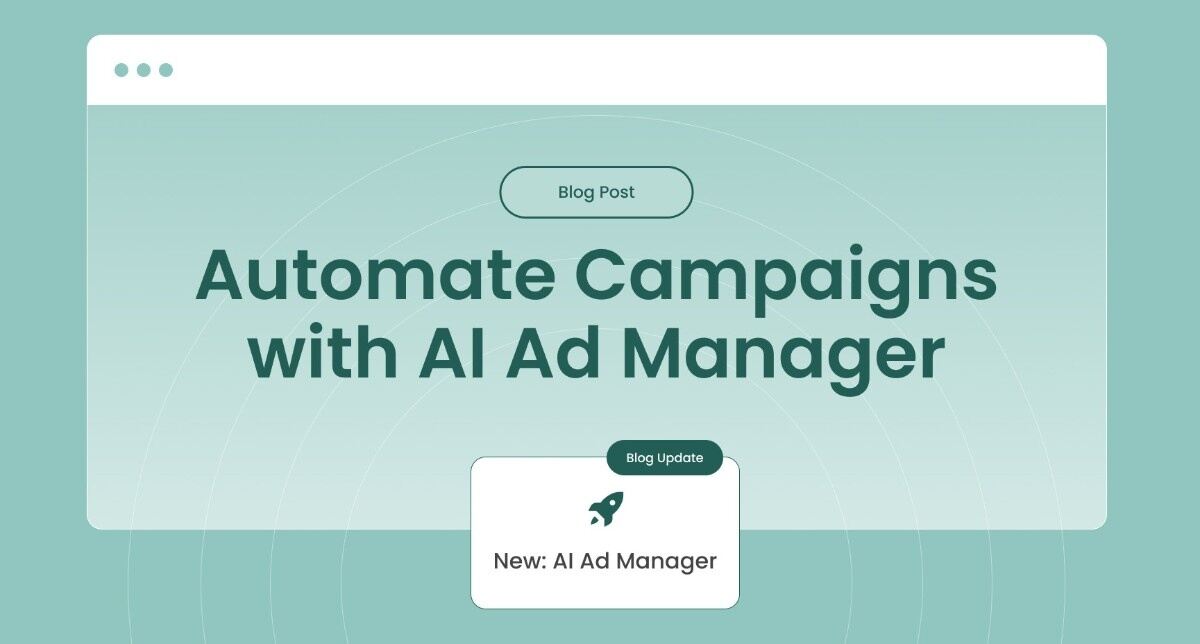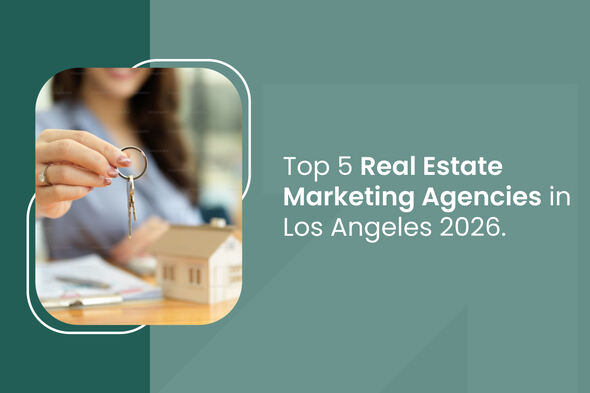Stop burning out on manual ad management! Leveraging AI-driven automation isn't just a trend; it's absolutely crucial for modern digital advertising success. The AI ad manager is here to simplify campaign success. It maximizes your ROI while drastically cutting down manual effort and saving you precious time.
Automated advertising allows your business to stay fiercely competitive. AI ad managers streamline targeting, bidding, and optimization. This happens continuously and in real time, so you never miss a beat. You can start immediately by defining clear goals and your ideal audience profile. This strategic transformation future-proofs your entire marketing strategy.
Key Highlights
- AI Ad Managers automate targeting, bidding, and optimization in real time, maximizing campaign ROI while reducing manual effort and saving time.
- They analyze extensive data including user behavior and demographics to deliver hyper-targeted ads and personalized creative content dynamically.
- Key features include automated bidding, dynamic audience targeting, creative optimization, cross-channel management, and real-time analytics for continuous performance tracking.
- Benefits of AI-driven campaigns include enhanced targeting accuracy, faster decision-making, improved cost efficiency, scalable personalization, and ongoing optimization aligned with business goals.
- AI improves lead nurturing by delivering personalized, timely engagement, dynamic lead scoring, and automated multi-channel outreach, boosting conversion rates up to 21 times.
- Setting up campaigns involves defining objectives, uploading creatives, enabling tracking pixels, setting budgets, and allowing AI to expand audience reach and optimize placements effectively.
What Is an AI Ad Manager and How Does It Work?
Tired of juggling optimization tools? An AI ad manager automates and optimizes advertising campaigns. It uses advanced machine learning algorithms. The simple truth is, it seriously reduces your manual workload.
Here’s how it works:
- The system analyzes vast data (user behavior, demographics, engagement).
- It quickly identifies the most relevant audience members.
- It automatically determines the ideal ad placements.
- It continuously adjusts bids and targeting in real time.
- This constant optimization process maximizes campaign performance.
Key functions of AI ads:
- Automated bidding.
- Personalized targeting.
- Dynamic content optimization.
Quick Fact: AI bidding boosts ROI by automating repetitive tasks, letting you focus on strategy.
Key Features of AI Ad Managers You Should Know
Let's look at the core firepower these platforms bring. AI ad platforms offer features that truly streamline performance. These capabilities reduce your manual workload. They help you launch truly smarter, more effective campaigns.
Comparison Table: Core Features of an AI Ad Manager
| Feature | Description | Importance for Marketing Automation |
| Automated Bidding | Real-time adjustment of bids for maximizing ROI. | Improves precision and cost efficiency. |
| Dynamic Targeting | Identifies optimal audience segments based on behavior. | Delivers hyper-targeted ads dynamically. |
| Creative Optimization | Personalizes ad creatives for individual users. | Boosts engagement and conversion rates. |
| Cross-Channel Management | Maintains consistent messaging across all channels. | Simplifies digital ad management. |
| Real-Time Analytics | Provides continuous performance tracking and reporting. | Enables faster, data-driven decision-making. |
Using platforms like GrowEasy.ai:
Speaking of smart tools, GrowEasy.ai provides an expansive free suite of tools. These include an AI Ad Creative Generator and AI Ad Copywriter. This supports the entire marketing automation workflow. The platform simplifies campaign success for small businesses.
The Benefits of Using AI for Automated Campaign Success
Automated advertising completely transforms your campaigns. AI-driven ad management boosts efficiency and precision. What does that mean for you? It leads directly to way better ROI.
Benefits of AI Marketing:
- Enhanced targeting accuracy. AI drastically reduces wasted spend.
- Faster decision-making. Real-time data drives rapid adjustments.
- Improved cost efficiency. Bid adjustments optimize your spend.
- Scalable personalization. Content is personalized dynamically.
- Continuous optimization. Campaigns align ongoingly with business goals.
Balancing Data and Creativity
Don't worry, the human is still in charge. Successful digital ad management requires your oversight. You must combine AI insights with your human intuition. The AI maximizes efficiency. The human sets the overall strategy and goal. This balance ensures dynamic adaptation to market shifts.
How AI Improves Lead Nurturing and Conversion Rates
Ever lost a great lead because you were slow? AI greatly improves automated lead nurturing. It delivers personalized, timely engagement. This speed is key to boosting conversions.
The simple truth is: AI analyzes behavior and intent data. It tailors messages and automates follow-ups. This ensures leads receive relevant content immediately.
Key advantages of AI marketing automation:
- Dynamic lead scoring. High-potential prospects are prioritized automatically.
- Automated, personalized outreach. Communication is tailored across multiple channels.
- Real-time engagement. Follow-up happens instantly based on user actions.
The speed of response matters: AI can respond to inquiries within minutes. This can improve conversion chances by up to 21 times compared to delayed responses. GrowEasy utilizes an AI WhatsApp Agent. This agent converses with and qualifies leads immediately. This precision accelerates the buyer journey and increases sales efficiency.
Step-by-Step Guide to Setting Up Your Automated Campaign with an AI Ad Manager
Launching an automated campaign is easier than you think. Setting up ad campaign automation is structured yet simple. This approach leverages the AI while maintaining your strategic control.
Using GrowEasy.ai as an Example: 4 Simple Steps
- Define Your Goals: Tell the platform about your business and marketing objectives. Examples include sales or lead generation.
- Generate Assets: The system creates creatives, ad copies, and budgets for you. Upload your product catalog and connect tracking pixels.
- Launch Campaigns: Launch across channels like Google, Instagram, and Facebook. Choose automatic placements for broader reach.
- Automate Nurturing: The AI WhatsApp Agent engages and qualifies leads generated. Monitor key metrics like Cost Per Acquisition (CPA).
Quick Fact: GrowEasy allows users to launch AI-powered campaigns across Google, Instagram and Facebook in approximately five minutes.
Choosing the Right AI Ad Platform for Your Business
Selecting the ideal AI ad platform depends on your goals and resources. Consider your specific needs carefully to maximize campaign efficiency.
Factors to Consider:
- Campaign Complexity: Do you need end-to-end automation or simpler tools?
- Budget: Evaluate the platform's pricing model versus the features offered.
- Integration: Ensure compatibility with your existing CRM and marketing stack.
- Support: Look for expert assistance and room for scalability.
The GrowEasy Example:
GrowEasy strategically targets SMBs and local businesses. Subscriptions start affordably at just ₹1,499 / $19. It provides robust vernacular support. This localization is critical for reaching diverse regional audiences effectively.
How to Configure Automated Campaign Settings for Maximum Impact
To achieve high impact with automated advertising, configure settings precisely. Ad campaign automation relies on clear, strategic instructions.
Configuration Checklist for Ad Campaign Automation:
- Set Clear Objectives: Align your campaign goals with overall business aims.
- Choose Bidding Strategy: Use strategies like target CPA or ROAS to optimize spend efficiently.
- Define Audience Segments: Use demographic and behavioral data for better targeting.
- Upload Creatives: Provide multiple creative variations for AI-driven A/B testing.
- Set Budgets: Enable automated bid adjustments to maximize ROI without overspending.
- Activate Monitoring: Use real-time tracking to adjust underperforming elements quickly.
Best Practices for Managing and Optimizing AI-Driven Automated Campaigns
Success requires balancing automation and human oversight. This dual approach is essential for effective digital ad management.
Optimization Best Practices:
- Set Measurable Goals: Give the AI clear targets to optimize toward.
- Continuously Test Creatives: Update your creative assets to maintain relevance.
- Monitor Real-Time Analytics: Identify performance shifts as they happen.
- Use AI Insights Wisely: Adjust budgets based on AI data, but don't follow blindly.
- Refine Strategy: Combine AI recommendations with human intuition for best results.
Metrics to Track for Measuring Automated Campaign Success
We need proof the system is working for you! Tracking the right KPIs is essential for effective AI marketing. Regularly monitoring these ensures your campaigns deliver optimal ROI.
Comparison Table: Key Performance Indicators (KPIs)
| Performance Metric | Definition | Focus Area |
| Cost Per Acquisition (CPA) | Measures the efficiency of acquiring a customer. | Efficiency & Cost Control. |
| Conversion Rate | Percentage of users completing a desired action. | Effectiveness & Funnel Success. |
| Return on Ad Spend (ROAS) | Revenue generated per dollar spent on advertising. | Profitability & ROI. |
| Customer Lifetime Value (CLV) | Estimates the long-term value from acquired customers. | Long-Term Viability. |
| Engagement Metrics | Includes social interactions and click-through rates (CTR). | Audience Interest. |
Real-World Examples of Successful Automated Campaigns Using AI Ad Managers
Major brands demonstrate the true power of the AI ad manager. These examples showcase enhanced precision and crucial time savings.
Visual Summaries of AI Success:
- BMW: The automotive giant uses generative AI. This helps craft personalized creatives, boosting engagement.
- Coca-Cola: They leverage AI-driven dynamic targeting. This delivers tailored messaging to specific segments, increasing conversions.
- Heinz/AdQuantum: Utilizing advanced AI automation cut campaign management time by 30%. This allowed them to scale rapidly across thousands of creatives.
The simple truth is: AI ad managers streamline even the most complex campaigns.
Conclusion: Embrace AI Ad Managers to Transform Your Advertising Strategy
Ready to ditch the daily optimization grind? AI marketing automation is essential for modern success. AI ad managers offer unmatched efficiency and precision. They automate complex tasks like targeting and bidding. This lets you focus on human strategy and creativity.
Benefits of embracing the ad manager:
- Reduce wasted spend.
- Improve ROI.
- Scale campaigns effortlessly.
Start integrating AI ad managers today. Harness real-time insights and continuous optimization. Leading with AI-powered advertising not only boosts performance but future-proofs your strategy.
FAQ’s
1. What is an AI Ad Manager?
An AI Ad Manager is a digital tool that uses artificial intelligence to automate advertising campaigns across platforms like Google, Facebook, and Instagram. It handles targeting, bidding, and optimization in real time to maximize ad performance and ROI.
2. How does AI improve advertising campaigns?
AI improves advertising campaigns by analyzing vast amounts of user data to deliver more accurate targeting, automate bidding strategies, and personalize ad creatives. This ensures better engagement, reduced costs, and higher conversion rates.
3. What are the main benefits of using an AI Ad Manager?
The key benefits include automated campaign optimization, precise audience targeting, improved ad spend efficiency, real-time performance tracking, and faster decision-making through AI-driven insights.
4. How is AI used in programmatic advertising?
In programmatic advertising, AI automates the buying and placement of digital ads through real-time bidding. It uses machine learning to identify the best audience segments and ad placements, improving reach and cost-effectiveness.
5. Can AI Ad Managers work with platforms like Google Ads and Facebook?
Yes, most AI Ad Managers integrate seamlessly with platforms like Google Ads Manager, Facebook, and Instagram Ads Manager. They help automate ad delivery, targeting, and performance optimization across multiple channels.
6. How does AI help with automated lead nurturing?
AI enhances lead nurturing by analyzing user behavior and engagement to deliver personalized messages at the right time. It automates follow-ups, scores leads dynamically, and ensures higher conversion rates through intelligent targeting.
7. What metrics should I track in AI-driven ad campaigns?
Track essential metrics like Cost Per Acquisition (CPA), Click-Through Rate (CTR), Return on Ad Spend (ROAS), Conversion Rate, and Customer Lifetime Value (CLV). These KPIs help measure efficiency and overall campaign success.
8. How do I choose the best AI Ad Platform for my business?
Choose an AI Ad Platform based on your campaign goals, budget, integration needs, and scalability. Compare options like Google Ads Manager, MarketingBlock AI, or Meta Ads Manager to find one that aligns with your objectives and resources.





